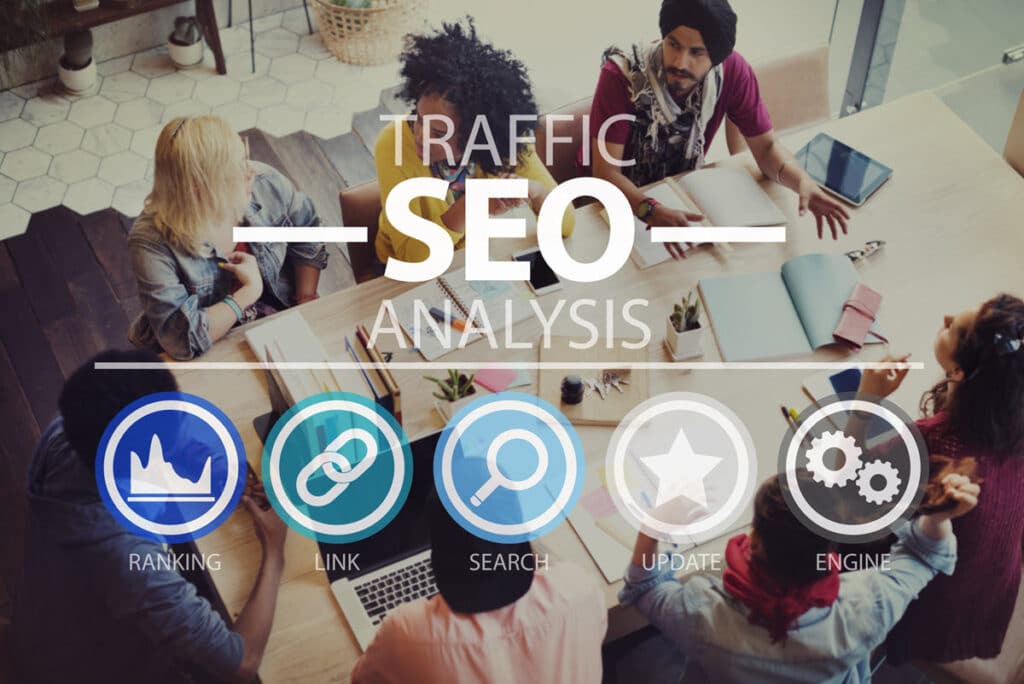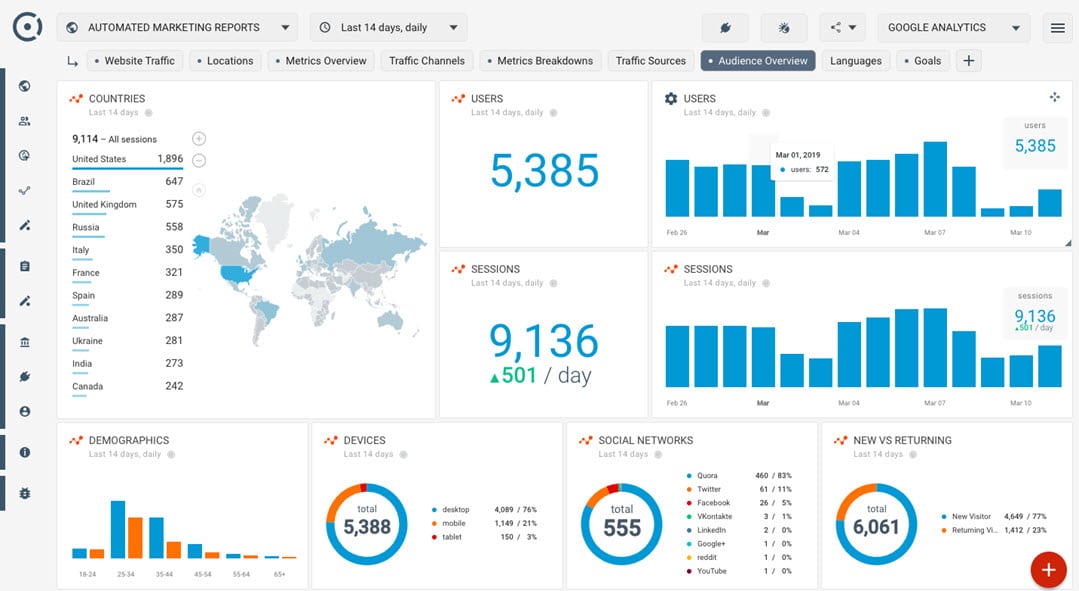SEO can be a sustainable, long-term strategy for growing your business. Organic traffic is considered the best kind of traffic because it’s free and converts better than any other type of traffic.
Everyone knows SEO stands for “search engine optimization.”
But how does it really work? The devil is in the details!
Organic SEO is the process of optimizing your site content to rank higher on search engine results pages (also known as SERPs). When someone types a phrase into a search engine, you want your site to be relevant and the first destinations suggested by Google or Bing. This way, you can get more traffic to your site and improve your chances of selling your product or service or capturing that user’s attention.
You may have heard of “organic SEO.” Essentially organic SEO and SEO are the same things. There are many different strategies for digital marketing, including paid advertising (SEM or Search Engine Marketing), social media marketing, and email marketing. But for this article, we are focusing on organic SEO. Organic searches are the free, natural way any website appears in search results. Once you have optimized your website, you don’t pay additional advertising fees to get people to your website. Paid ranking, on the other hand, is when you pay Google (or another search engine) to display your website at the top of the results page. This is called “pay-per-click” (PPC) advertising.
Another benefit of SEO is that organic links are more trustworthy than paid advertisements. The reason is simple: would you prefer going with a recommendation you know is being pushed by an advertiser paying fee for the privilege of being listed first, or would you feel better going with unbiased guidance that can’t be rigged?
Why is Organic SEO Important?
Very simply: it can help you get more traffic to your site. More site traffic means more exposure for your business. And when done correctly, SEO can be a sustainable, long-term strategy for growing your business. Organic traffic is considered the best kind of traffic because it’s free and converts better than any other type of traffic. That’s why organic SEO should be the foundation of any digital marketing solution. You can always add SEM to boost your traffic, but if you want a sustainable digital marketing program, you can’t live without SEO.
Customers often tell me: “I already optimized my website, so isn’t that enough? “
The answer is: probably not. SEO is an ongoing process, not a one-time project. There are two main reasons for this: 1) Google is constantly changing the way it works (more on this later), and 2) you are (or should be) continually adding new content to your website. That content needs to be optimized, and previously optimized content should be reviewed by looking at your website’s analytics to see what’s working and is not working.
Another concern: “SEO might be important, but it seems very difficult, if not impossible, to maintain!”
I’m not going to minimize it, but it’s not hopeless. If you’re the New York Times or a Fortune 500 company, SEO is easy. Their websites naturally rank highly for relevant keywords because they are robust and filled with high-quality content. They’ve been around for a long time and have a considerable following. But for smaller companies, SEO is much more complicated. Smaller company websites don’t have as much traffic and less content. This makes it challenging to rank highly for the keywords they want to target.
The good news is that there are things you can do to improve your SEO, no matter what your starting point may be. By improving your site’s design, creating compelling content, and building links from other websites, you can start to see an improvement in your search engine rankings. And as your rankings increase, so too will your traffic and visibility.
The Basic concepts
You need to understand a few essential factors that affect how SEO works. First, you need to accept that the art of SEO is constantly changing. I know that’s frustrating, but that’s the way technology works. Search engines use algorithms to determine your website’s rank for a given keyword. These algorithms are constantly changing, so SEO is an ongoing process, not a one-time optimization effort. In its early years, Google only made a handful of algorithm updates. Now, Google makes thousands of changes every year. So it’s no wonder the process of SEO can be confusing. What worked for you last year may stop working this year.
Ranking, Ranking, Ranking
If you’ve ever worked with someone in real estate, you’ve heard the phrase “location, location, location.” It’s the same idea as Google search. Your website has to appear on the first page of the search results if you have any chance of winning the search. And to be on the first page, you must be shown in the top 4 or 5 results of any particular search. From Google’s website: “With the vast amount of information available, finding what you need would be nearly impossible without some help sorting through it. Google’s ranking systems are designed to do just that: sort through hundreds of billions of webpages and other content in our Search index to present the most relevant, useful results in a fraction of a second.”
Let’s look at it from the user’s point of view (the web searcher): When a user types in a query and hits enter, Google’s algorithms work. In a fraction of a second, they scour the internet and bring back the results they believe are the most relevant to the user. The order in which those results are displayed is called “rank.” The higher your result is on the page, the better your “rank.” The average person will spend less than 5 seconds deciding what to click after entering a search term on Google. If the information about your website seems ambiguous or not relevant, your site won’t be selected. (In other words, your competitor will get the click!)
So how do you get on the first page of a Google search?
That’s the hard part! Thirty different factors go into making that happen. For this article, we’ll mention the main categories. Future articles will go into more detail.
To improve your site’s ranking, you need to focus on these factors. By creating high-quality content that contains the right keywords, you can signal to the search engines that your site is relevant and should be ranked higher. You can also build up your backlink profile by getting other websites to link to your site. And finally, you can improve your website’s load time and mobile friendliness to ensure that users have a good experience when they visit your site.
You can also improve your SEO ranking by making your website ADA Compliant. ADA Compliance can increase organic search traffic from Google by up to 50%, according to a recent study by SEM Rush and BuiltWith.
SEO is an essential part of running a successful website. By understanding how it works and what ranking factors are important, you can optimize your site accordingly and see better results.
Next, we will discuss a the importance of high quality relevant content to improving SEO rankings.
Sources
1. Wordstream by LOCALiQ | Learn how to Optimize for SEO
2. Search Engine Journal | 12 Essential On-Page SEO Factors You Need To Know





